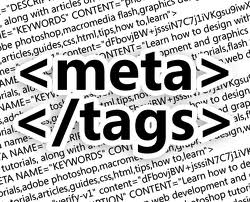Writing good page titles is essential for anyone who’s into SEO. There are two goals that a good page title must achieve: It must help you rank for a keyword and also make the user want to click to your page.
The meta title or the title tag is the first thing a user notices in the search results. It’s also one of the most important factors Google uses to decide what the topic of a page is. Meta titles appear in 3 important places: Browser, search engines and external websites.
Google uses the CTR (click-through rate) to determine the relevance of your webpage. If your CTR is too low according to Google standards, your rankings will drop. The opposite is also true. A title that gets people to click will also help you rank better. Depending on the title tag used, Google crawls and indexes your pages. Pages with no-index tag will not be added to Google search. To rank higher in search engines, only index the vital parts of your blog/website.
Before we move on, if you need any kind of help with SEO, you should definitely reach out to us. Check out our team. Let’s talk.
Optimising meta titles
Diligently optimized meta titles can increase website traffic. They also play a significant role in the SERP rankings of a website. So it is of great importance to optimize the meta titles. But how is it done?
Here are a few things you should keep in mind to optimize meta titles:
Length:
The length of a meta-title should be ideally 50-60 characters. Google’s policy limits its length to 512 pixels, so longer tags will get slashed from the search result.
Keyword presence:
You must make use of relevant keywords while forming an effective title.
Keyword stuffing:
Keep in mind to refrain from stuffing keywords. This will create a negative impact and soon your webpage will lack relevance in the SERP. It would be pushed to the 3rd or 4th page of the Google search results.
Duplicate titles:
Duplicating titles is not a good idea as they may erase out the unique and relevant keywords.
Branding:
You should place your brand’s name at the end of the page title, if your brand is not that well known. Otherwise, it is always advised to place it first.
Readability:
A title tag that is relevant and also visually appealing prompts the user to click the link. So readability is to be kept in mind while deciding the title tag.
Local optimization:
Including details like local cities, state, etc. will increase the local relevance in the search results.
Meta descriptions
Meta description is a short preview of the content present in a website. They are HTML attributes used in SERPs that give users a short preview of the particular site they have searched for. Meta descriptions are only viewable to the robots within the source code.
Similar to meta title, meta description too will have to be compelling and appealing to provide relevant information to the user and prompt them to click the desired link.
Since meta descriptions are lengthy and are not displayed completely in the search result. Moreover, they don’t give a clear picture of the relevant content that the landing page carries.
Optimizing meta descriptions
Length:
The length of meta descriptions, though not specified, is ideally 160 characters
Unique content:
You must provide content that is readable, informative and unique from other descriptions present in the SERPs.
Use call-to-action:
The beginning of a meta description should invoke an action verb, followed by call-to-action that must tempt visitors to click.
Keywords:
Use as many keywords as you can, taking care not to make them look stuffed. Also avoid duplicates.
Alphanumeric characters:
Google identifies quotes, hyphens etc. in description content as HTML code. So avoid using them to prevent slashing out of the description from the SERP.
Alt tags, also called “alt attribute” or “alt description,” are HTML code attributes applied to image tags to provide text alternatives for search engines. Applying alt tags to images like product photos could positively impact SEO rankings of a website.
Before we move on, if you need any kind of help with SEO, you should definitely reach out to us. Check out our team. Let’s talk.
Images play an integral part in how people comprehend the information provided in a webpage. However, these images are not understood by search engines and other robots.
When Google spiders and other robots crawl the webpages, only those with properly defined alt attributes contribute to how the page is indexed and how it ranks.
The syntax of alt tags is as follows:
HTML <img> alt Attribute
An example of specifying an alt tag to an image is:
<img src=”smiley.gif” alt=”Smiley face”>
In the above example, the gif file, which is a smiley face can be interpreted by humans. Specifying an alt tag “Smiley face” makes it easy for the robots to comprehend what that image is.
To keep in mind
The alt text should always be kept short to maximize the impact. Short alt texts are very likely to be indexed by Google and the other online search engines much more efficiently. Never forget to mention the subject within the alt text.
Refrain from stuffing keywords, as Google and other major search engines don’t favour them.
Never prioritize alt tags over meta titles, inter-linking, meta descriptions etc. that are crucial for SEO. Alt tags should only be prioritized for image-based pages that do not contain much text.
As always, feel free to reach out to us if you need any help with SEO. That’s all for now, cheers!
( Image courtesy: mynet.su )


Facebook Comments